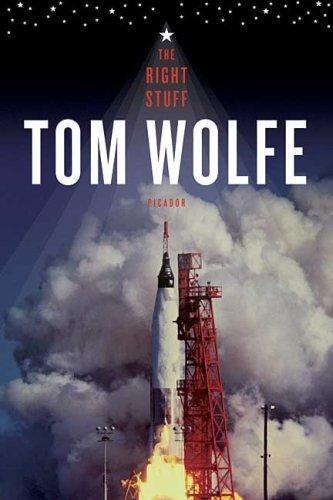
The Right Stuff
by
Tom Wolfe
Published 1 Jan 1979
(Ours all blow up!) Chuck Yeager was in Phoenix to make one of his many public appearances on behalf of the Air Force. By now the Air Force couldn't publicize Yeager, breaker of the sound barrier, enough. Like the other branches of the service, the Air Force now saw that there was nothing like heroes and record holders for getting good press and whining appropriations. The only problem was that, in terms of publicity, every other form of flier was now overshadowed by the Mercury astronauts. As a matter of fact, today, in Phoenix, what was it the local reporters wanted to ask Chuck Yeager about? Correct: the astronauts.
…
But even before John got back to the Cape from Grand Bahama Island, there was a note of worshipful swooning in the air that indicated that Al had not made the first flight, after all. He had merely made the first suborbital flight, which now looked like nothing at all. He was now more like Slick Goodlin to John's Chuck Yeager. Slick Goodlin had, technically, made the first flight of the X-1. But it was Yeager who made the flight that counted, the flight in which they first tried to push the bird supersonic. As Slick Goodlin to John's Chuck Yeager—what was Al supposed to do, cheer about it? And Betty Grissom—who never even got a parade down the poor dim dowdy main street of Mitchell, Indiana—was she supposed to be tickled pink about the Glenns, who were going to be paraded up and down every high road in the United States?
…
Military pilots and then, soon, airline pilots, pilots from Maine and Massachusetts and the Dakotas and Oregon and everywhere else, began to talk in that poker-hollow West Virginia drawl, or as close to it as they could bend their native accents. It was the drawl of the most righteous of all the possessors of the right stuff: Chuck Yeager. Yeager had started out as the equivalent, in the Second World War, of the legendary Frank Luke of the 27th Aero Squadron in the First. Which is to say, he was the boon-docker, the boy from the back country, with only a high-school education, no credentials, no cachet or polish of any sort, who took off the feed-store overalls and put on a uniform and climbed into an airplane and lit up the skies over Europe.
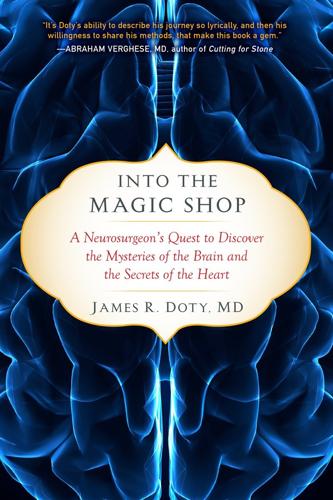
Into the Magic Shop: A Neurosurgeon's Quest to Discover the Mysteries of the Brain and the Secrets of the Heart
by
James R. Doty, Md
Published 2 Feb 2016
He wanted to break the barrier out of a quest for adventure and a spirit of discovery. He wanted to see just what man was capable of achieving when pushed to his limits. Even with two broken ribs and so much pain he had to jerry-rig a broom handle to help him close the hatch of the plane, he would not be deterred. Who was I? Was I the guy Oscar Wilde described, the one “who knew the cost of everything and the value of nothing”? I spent a good deal of my life trying to reconcile my inner Slick Goodlin and my inner Chuck Yeager. I had empathy for others who had struggled like me, who were in pain, and I wanted to help them. But I also wanted success. Practicing Ruth’s magic had gotten me this far, and I continued to practice daily, knowing that I was only part of the way to where I wanted to be.
…
I could always taste the dust in my mouth—gritty and weedy like the rabbitbrush and cacti that battled the desert sun and heat to survive. My family had little money, and I was often hungry. I didn’t like being hungry. I didn’t like being poor. Lancaster’s greatest claim to fame was Chuck Yeager breaking the sound barrier at nearby Edwards Air Force Base some twenty years earlier. All day long planes would fly overhead, training pilots and testing aircraft. I wondered what it would be like to be Chuck Yeager flying the Bell X-1 at Mach 1, accomplishing what no human had ever done before. How small and desolate Lancaster must have looked to him from forty-five thousand feet up going faster than anyone ever thought possible.
…
Plus, being a plastic surgeon to the rich and famous paid very well, and I would meet a lot of very attractive women. I had accepted a scholarship to pay for medical school for the first year, and after my freshman year I accepted a scholarship from the army. I felt a deep obligation to serve my country, and I wanted to give back. I remembered so vividly my dreams of being Chuck Yeager flying over Lancaster and breaking the sound barrier, and my pride in wearing the uniform of a Law Enforcement Explorer. One thing I learned during college was that Yeager was not the first choice to break the sound barrier—this honor belonged to a man by the name of Slick Goodlin. The problem with Goodlin was that he demanded a fee of $150,000—a huge sum of money in 1947—to fly the plane.
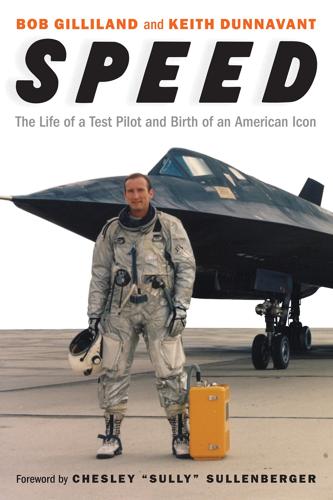
Speed
by
Bob Gilliland
and
Keith Dunnavant
It certainly had the ring of culmination, completing his long march out of the shadows. General Bob Cardenas, the man who sent Chuck Yeager into the history books, always viewed Gilliland as “one of the best of the best.” “What he did with the Blackbird program qualified him in the top tier of test pilots.” Dick Rutan saw his friend as a trailblazing figure who “paved the way” for future test pilots, “courageously, safely, and without a scratch.” Gilliland did not bury a myth like Chuck Yeager. He did not die as a tragic hero like Ivan Kincheloe. He did not achieve a cultural milestone like Neil Armstrong or embody the power of resilience in the face of deep-space adversity like Jim Lovell.
…
The man they selected to step into the unknown started his military career as an aircraft mechanic, a buck private at the bottom of the food chain. He quickly rose through the ranks during World War II, becoming a decorated fighter pilot with eleven and a half official victories and once shooting down five planes in a single day. Chuck Yeager had something special, and he volunteered for the secret mission, understanding that he would likely make history or die trying. The team also included backup pilot Bob Hoover, who flew fifty-nine combat missions in the European theater and spent sixteen months as a German prisoner of war before escaping to freedom.
…
Without his knowledge, Schalk and Tony LeVier had been lobbying Kelly on his behalf, demonstrating their extreme confidence in his abilities. LeVier was nearing the end of his brilliant career, which included flying 260 different types of aircraft and logging more than ten thousand hours. He remained the standard by which all Lockheed test pilots were judged. “A lot of people think Chuck Yeager was the greatest American test pilot,” Gilliland said. “I say it was Tony LeVier.” Among his many aviation friends was Charles Lindbergh, who had inspired his career. When Lucky Lindy came west for a banquet, LeVier wrangled an invitation for Bob and introduced the men, who had a nice conversation that concluded with Lindbergh’s promise to send him a copy of his recently published autobiography.
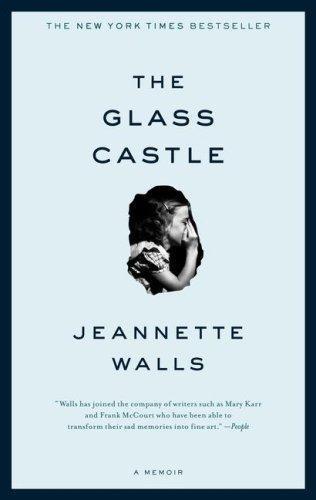
The Glass Castle: A Memoir
by
Jeannette Walls
Published 15 Mar 2005
Most of these people had never appeared in the paper, and they were so excited to see their names in print, they bought several copies. Circulation doubled. Miss Bivens wondered aloud if. "Birthday Corner" represented serious journalism. I told her I didn't care—it sold papers. Chuck Yeager visited Welch High that year. I'd been hearing about Chuck Yeager all my life from Dad, about how he'd been born in West Virginia, in the town of Myra on the Mud River over in Lincoln County, about how he joined the air force during World War II and had shot down eleven German planes by the time he was twenty-two, about how he became a test pilot at Edwards Air Force Base high up on the Mojave Desert in California, and about how one day in 1947 he became the first man to break the sound barrier in his X-1, even though the night before, he'd been up drinking and had been thrown from a horse and cracked some ribs.
…
I'd been hearing about Chuck Yeager all my life from Dad, about how he'd been born in West Virginia, in the town of Myra on the Mud River over in Lincoln County, about how he joined the air force during World War II and had shot down eleven German planes by the time he was twenty-two, about how he became a test pilot at Edwards Air Force Base high up on the Mojave Desert in California, and about how one day in 1947 he became the first man to break the sound barrier in his X-1, even though the night before, he'd been up drinking and had been thrown from a horse and cracked some ribs. Dad would never admit to having heroes, but the brass-balled, liquor-loving, coolly calculating Chuck Yeager was the one man in the world he admired above all others. When he heard that Chuck Yeager was giving a speech at Welch High and that he'd agreed to let me interview him afterward, Dad could hardly contain his excitement. He was waiting on the porch for me with a pen and paper when I got home from school the day before the big interview. He sat down to help me draw up a list of intelligent questions so I wouldn't embarrass myself in front of this greatest of West Virginia's native sons.
…
Dad wrote up about twenty-five or thirty questions like that and then insisted we rehearse the interview. He pretended to be Chuck Yeager and gave me detailed answers to the questions he'd written out. His eyes got misty as he described what it was like to break the sound barrier. Then he decided I needed some solid grounding in aviation history, and he stayed up half the night briefing me, by the light of a kerosene lamp, on the test-flight program, basic aerodynamics, and the Austrian physicist Ernst Mach. The next day Mr. Jack, the principal, introduced Chuck Yeager during assembly in the auditorium. He looked more like a cowboy than a West Virginian, with his horseman's gait and his lean leathery face, but as soon as he started speaking, his voice was pure up-hollow.
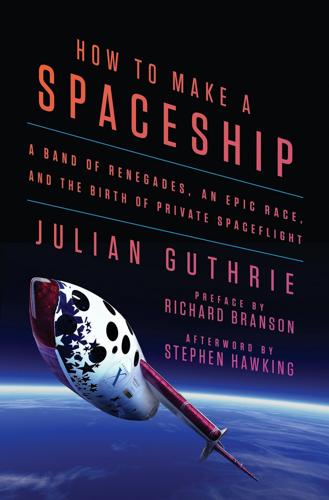
How to Make a Spaceship: A Band of Renegades, an Epic Race, and the Birth of Private Spaceflight
by
Julian Guthrie
Published 19 Sep 2016
He also developed a training film titled Unload for Control. He and Gentry then personally briefed every USAF F-4 pilot in the world, going on a whirlwind tour of forty-eight locations as far away as Incirlik, Turkey, and Bangkok, Thailand. Edwards, of course, was where some of the military’s fastest and most experimental jets were tested, where Chuck Yeager was the first to fly faster than the speed of sound, and where the X-15 reached suborbital spaceflight. Burt left Edwards in 1972 for what turned out to be an ill-fitting corporate job with Bede Aircraft in Kansas. He quickly realized he wanted to follow his own calling and, in 1974, he returned to California to open the Rutan Aircraft Factory on the Mojave flight line, designing and developing prototypes for small planes to be put together by amateur builders.
…
Commissioner Richard Feynman, the Caltech physicist and Nobel laureate, concluded, “The management of NASA exaggerates the reliability of its product, to the point of fantasy.” Burt had followed the commission’s findings only from afar. One of the more memorable things to come out of it was something he heard from test pilot Chuck Yeager, who would swing by to visit on occasion. Yeager was appointed to the commission and attended the first meeting, where discussion centered around the shuttle’s O-rings, which failed due to the cold temperatures on the morning of the launch. (In one meeting, Feynman took an O-ring and put it in ice water, showing how the material was compromised by the cold.)
…
Someone will have a breakthrough, and it would be the best money you would spend while you’re running NASA.” Finally, Goldin thawed. He knew Burt was critical of the space agency because his life’s work had been inspired by the X-planes of the forties and fifties, and NASA of the sixties. Burt was Burt in large part because of the risks taken by the likes of Chuck Yeager, Wernher von Braun, Alan Shepard, Neil Armstrong, and Buzz Aldrin. What he was saying was that he wanted NASA to keep inspiring. “I’m here,” Goldin said by way of response. “I’m clearly very receptive to wild and crazy things.” — On the van heading to the Gateway Arch, Erik Lindbergh and his brother Morgan heard the last of the barbs between Goldin and Rutan.
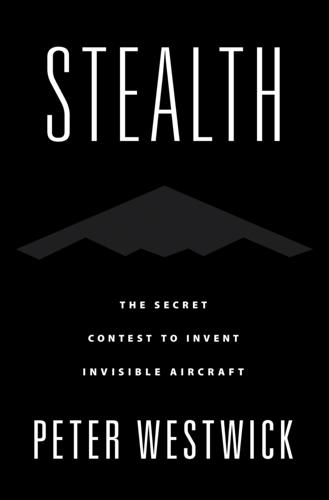
Stealth
by
Peter Westwick
Published 22 Nov 2019
As one F-117 test pilot put it, “I don&t think you’ll find any of us that are complete set-your-hair-on-fire-and-let’s-go kind of guys. We’re pretty methodical, risk-averse guys.”26 The younger ones, especially, represented a gradual shift within the test pilot fraternity, from barnstormers to engineers, from cowboys to calculators—in short, from Chuck Yeager to Neil Armstrong.27 Many of these younger pilots had advanced engineering degrees, which helped in two ways: they had a solid technical understanding of the aircraft, and they took an engineer’s rational approach to risk, analyzing and minimizing it. That’s not to say they were dull. Dry, maybe.
…
Murphy decided to make an impromptu heat shield; he spied a steel cabinet in the corner of the hangar and, figuring that “steel is steel,” cut the cabinet into small panels. That was not his last improvisation on Have Blue.32 Broomsticks loom large in the history of American aviation. Many know the story of Chuck Yeager’s 1947 flight to break the sound barrier, when his flight engineer jury-rigged a cockpit door handle with a sawed-off broom. For Have Blue’s maiden flight thirty years later Bill Park was in the cockpit on the runway, as Lockheed and Air Force brass arrived for the occasion. There was a problem, though, with fuel migrating from the fuselage tanks to the wings.
…
Bob Murphy hooked up a fuel pump to fix it, but the fuel tank burped an air bubble and blew the cap into the tank. “Oh, shit.” The cap was sitting on a narrow ledge at the top of the tank, but Murphy couldn’t get his hand through the opening. Park kept asking, “What’s going on back there?” Murphy, to Park: “No sweat!” He spotted a push broom nearby and grabbed it—the broom handle just fit, Murphy snagged the cap, and he called to Park: start the engines.33 The first flight was uneventful, but subsequent flights revealed design and production problems. The platypus, for example, took the full heat of the engine exhaust over its upper surface, so the top would get hot while the bottom surface stayed cool; thanks to differential expansion the platypus curled up like a potato chip, which in turn blew up the radar signature.
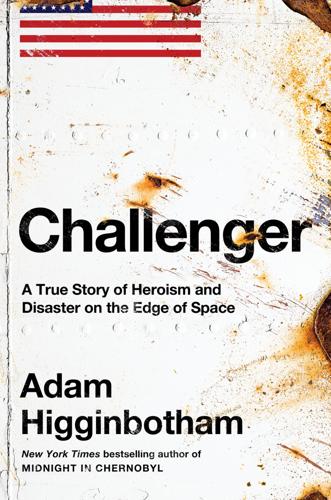
Challenger: A True Story of Heroism and Disaster on the Edge of Space
by
Adam Higginbotham
Published 14 May 2024
Just by being admitted to ARPS, he had apparently become the icon of equal opportunity the White House had wanted: a real-life example of civil rights in action, proving to young African Americans everywhere that with tenacity and education they, too, could join the race to the stars. Dwight’s day-to-day reality was different: on arriving at the school he discovered he was resented by those who felt he had only been admitted because of the President’s influence, and believed he had taken the place of better-qualified white pilots. According to Dwight, the ARPS commandant, Chuck Yeager—the first man to break the sound barrier, portrayed in Tom Wolfe’s The Right Stuff as the archetype of the swaggering experimental aviator—wanted him off the course from the minute he arrived. “We can get him out of here in six months,” Yeager told one of Dwight’s classmates. “We can break him.”
…
Scobee returned home with a promotion to captain, and was awarded the Distinguished Flying Cross. Yet his old ambitions lingered. Every now and again, he still talked about his dreams of flying faster, and higher. June was in the spring semester of her first year as a high school science teacher when Dick came home one day to tell her he’d been invited to attend Chuck Yeager’s Air Force Test Pilot School in the high desert at Edwards. They talked once again about the risks, and the opportunities that might come with qualifying for experimental flying; they sweetened the prospect of the move for the children—Rich and Kathie, still both under ten—by telling them how close the base was to Disneyland.
…
“It’s time now to assemble a group of distinguished Americans to take a hard look at the accident,” Reagan said, “to make a calm and deliberate assessment of the facts and ways to avoid repetition.” The twelve members of the panel had been drawn from a list supplied by Acting Administrator Graham, and included a selection of prominent scientists and aerospace celebrities, among them Neil Armstrong; Sally Ride; lauded test pilot Chuck Yeager; Air Force General Don Kutyna, head of the Pentagon’s side of the shuttle program; and the colorful Nobel Prize–winning physicist Richard Feynman. Empowering them to pursue any avenue of inquiry necessary to uncover what had gone wrong and assured of the full cooperation of NASA by Graham, Reagan gave the commission 120 days to investigate and deliver their official report.
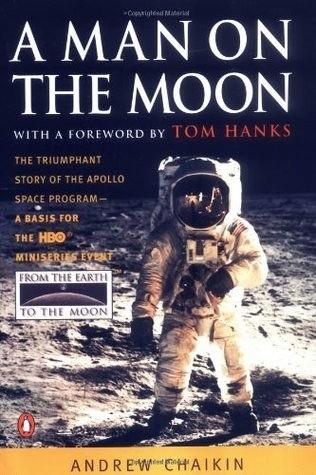
A Man on the Moon
by
Andrew Chaikin
Published 1 Jan 1994
But when he went to Edwards to make his case, things didn't go as he'd hoped. One of the admissions people told him, “If only you had an advanced degree, you’d be a prime candidate." “Advanced degree?" “Yeah, we're pushing academics." Along with his mild disappointment, Anders felt a sense of irony; he wondered what Chuck Yeager—the most famous test pilot in the world—would have thought of this new requirement. In 1947, Yeager had become the first human being to shatter the sound barrier, flying a rocket plane over the desert at Edwards. The world of test flight had changed since then, but not Yeager; he was still the prototypical rocket ace, an alloy of split-second reflexes, go-for-broke daring, and unflappable calm.
…
Discouraged, he accepted an assignment as an engineer and instructor pilot at Kirtland Air Force Base in Albuquerque, where the air force was conducting a program of nuclear research. And he bided his time, waiting for the hiatus at ARPS to end. That happened the following year, 1963. Anders readied another application, sure that his graduate work would impress the selection committee. But ARPS was now under the command of none other than Chuck Yeager. He told Anders, "We've changed the requirements. We're looking for flying time." Anders realized that if he'd stayed in his squadron for the last three years flying an F-101, he'd be in —some of his squadron mates were being accepted. Undaunted, Anders applied anyway. As often as he could, he took a break from his duties at Kirtland to fly to Edwards, demonstrating his skills by duplicating the flying maneuvers required for the entrance exam.
…
In the mid-fifties space travel was something most people were careful to avoid talking about in serious tones. But it wasn’t far-out to the people at Edwards, and Armstrong soon sensed that the road to space began on the high desert. The air force and NACA were sitting down to design a sleek, winged rocket plane called the X-15, a descendant of the rocket-powered X-l that Chuck Yeager had used to break the sound barrier here a decade earlier. Carried aloft under the wing of a B-52 bomber and then released, the X-15 would zoom to the fringe of the atmosphere, then glide to an unpowered, or “dead-stick,” landing on the lakebed. Armstrong was among the handful of pilots slated to fly it.
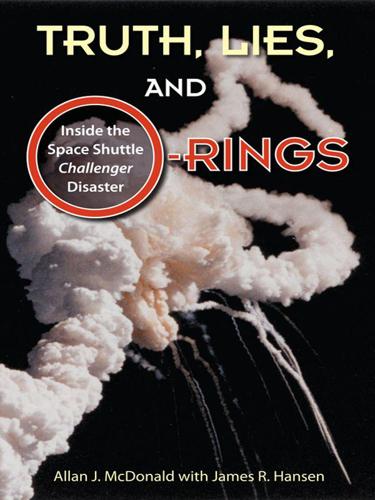
Truth, Lies, and O-Rings: Inside the Space Shuttle Challenger Disaster
by
Allan J McDonald
and
James R. Hansen
Published 25 Apr 2009
NASA then instructed its people on exactly where they were to sit in the room yet didn't say anything to Dr. Mark Salita, Don Ketner, or myself as we were about to walk into the room. I turned to Don and Mark and told them to just go in and sit down in the back of the room, which we did. Chairman William Rogers called the meeting to order and introduced General Chuck Yeager as a member of the Presidential Commission who had been unable to attend earlier meetings because he was off breaking another flight record. Yeager then informed the Commission that he had prior commitments and would not be able to attend any future meetings, either, at least not until sometime in March.
…
That shows that you had violated the primary seal in some way, to get gas between the two seals. Erosion itself, as long as you don't violate the seal and it still has integrity, is not a problem.” Rogers cut off the conversation and asked for a short break. During the recess, I overheard the only comment made by Chuck Yeager during the entire affair, probably because it was the rare occasion the general attended a meeting. A few Commission members were already commenting on the need to redesign the SRB joint, to prevent this from ever happening in the future, and Yeager declared, “Hell, give me a warm day and I'll go fly that son of a bitch!”
…
The ETM-1A test was a great success nonetheless. It clearly demonstrated that the Space Shuttle could fly again safely if the vacuum putty blowholes in the field-joints were effectively repaired after assembly and with joint heaters installed until a full redesign could be accomplished. This had been just what General Chuck Yeager had implied in the first executive meeting of the Presidential Commission. However, such a possibility, no matter how rational, was unthinkable back at the time in the emotionally charged atmosphere immediately following the accident. Still, anything and everything about the Shuttle was making news; even the ETM-1A test had been a media event.
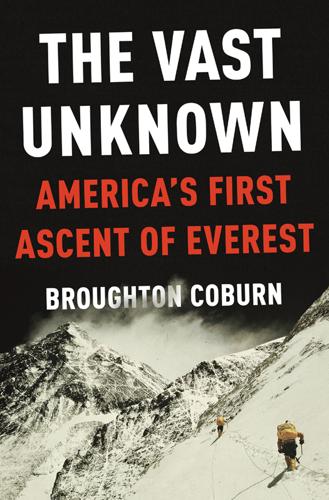
The Vast Unknown: America's First Ascent of Everest
by
Broughton Coburn
Published 29 Apr 2013
On the crux move—a nearly insurmountable obstacle on the route’s Black Face—Corbet removed a noble souvenir: one of Durrance’s hand-forged iron pitons. He later presented it to the legendary climber in Denver, where Durrance was practicing medicine. Until then, Durrance had been their invisible Chuck Yeager—inspiring them as the high-flying test pilot did the astronauts—to push every limit and keep their focus trained on success. The Tetons had become the Dartmouth climbing clan’s untamed, vertical playpen—a proving ground for the skills they’d honed on the primordial rocks of New England. During the summers of the 1950s, Jackson Hole hosted one of the greatest concentrations of Dartmouth students outside of New Hampshire.
…
One week earlier, from Faith 7, Astronaut Gordon Cooper had similarly marveled at the constellations of flashes from thunderstorms across the plains of northern India. They could feel the slope steepen. “Willi!” Hornbein suddenly shouted. Hornbein had stepped off a small cornice of snow and dropped several feet. The rope snapped taut on Willi, and he threw himself on his ice ax, executing an abrupt, static belay—the kind that can result in broken ribs. Once Hornbein had secured himself, Unsoeld descended to him. Then Hornbein extended his ice ax and arms, and helped Unsoeld over the cornice. It was a big enough drop to launch an unwary climber onto the treacherous slope below. The beams of their flashlights dimmed to a faint glow almost immediately after they were switched on, and their retinas only captured faint imaginations of footprints or ice ax holes.
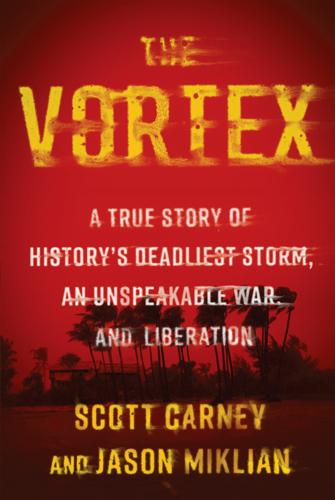
The Vortex: A True Story of History's Deadliest Storm, an Unspeakable War, and Liberation
by
Scott Carney
and
Jason Miklian
Published 28 Mar 2022
Then they’d find some fixers adept at working in the shadows to get Yahya enough weapons to ensure total military supremacy. For his part, the Chinese premier Zhou Enlai told Yahya that events in East Pakistan were a “purely internal affair” for Yahya to solve as he saw fit and “without foreign interference.” Nixon then sent World War II ace Chuck Yeager, the first man to break the sound barrier, over from Vietnam where he met with Pakistan Air Force officials to help strategize bombing raids. Yeager thought it was barely worth his time. He surmised there was no way the Bengalis could ever defeat the well-disciplined Pakistan Army. Yahya was doing his best to blitz through the Bengalis, but he needed a favor from Nixon.
…
She was going to take the fight right to Nixon’s doorstep. 36 Mohammad Hai MANPURA ISLAND, EAST PAKISTAN APRIL AND MAY 1971 Nine men grunted softly and swung their sticks toward imaginary targets. There was just enough moonlight to see that they weren’t nearly in unison. “Again! Harder!” their leader whispered, as loud as he could without raising unwanted attention. The men brought the sticks back to their shoulders. Some lofted broom handles. A few others bore shovels. The group attacked again, and their improvised weapons thudded back to the ground. The Bengali resistance’s Manpura regiment was not quite battle-ready. In fact, this was their first training session. Hai and Malik cobbled the group together out of their friends and family.